PRESERVING CAPE HERITAGE AND CULTURE THROUGH EXPLORING VISUAL ARTS AND EDUCATION
Khatt al-Janubi
by Faheem Rhoda-Jackson
Artist bio
Calligrapher Faheem Rhoda Jackson showcases Khatt al-Janubi, meaning "southern script", it is initially based on the writing of the early Muslims at the Cape. In the history and development of Arabic scripts, we find "Eastern" and "Western" scripts, and also "Chinese / Seeni" scripts. Jackson brings more awareness to "southern" script as part of our history and writing culture, highlighting the future of the practice and the importance of its preservation.
Jackson began drawing at an early age, but only started taking art classes in his late 20s. From 2002-2003, Jackson went to Syria to study Arabic at the Abu Nour University in Damascus, where he studied Khatt (Arabic calligraphy) with Professor Adham Fadi Al- Ja’fari. It was here that Jackson learnt the basics of the Riq’a script. After returning back to South Africa, Jackson sat with his father’s friend, Dr. Sulaiman Nordien, who was both a surgeon and an Arabic calligrapher, and whose passion and love for the art of calligraphy and poetry was infectious.
In November 2017, Jackson held his first Arabic Calligraphy introduction course which was an instant success. In 2018, Jackson joined the South African Foundation for Islamic Art (SAFIA) and began exhibiting with them, the Cape Town Art Fair and the Cape Town Ramadan for All event at the Castle of Goodhope. After leaving SAFIA in 2018, Jackson focused on developing Arabic Calligraphy in South Africa and founded the Arabic Calligraphers South Africa (ACASA) website, which is the first guide to Arabic calligraphy, and supports other traditional arts such as Ebru, paper making, guilding and illumination design. Jackson continues to commission work and is also pursuing another interest of his, Malay Martial Arts called Seni Silat or Pencak Silat.
Faheem Rhoda Jackson's journey through the realm of calligraphy is a testament to his unyielding passion and dedication. His impact reverberates globally, in 2019 he curated the renowned "Seas of Ink" exhibition, displaying the works of world-renowned calligraphers during the JEQ 50th anniversary event. The years 2021-2022 marked another significant chapter as Faheem studied Ruq'ah, Diwani, and Celi Diwani scripts under Ustadh Shahryanshah Sirajuddin at the Deen Arts Foundation. His dedication culminated in receiving an Ijazah in Ruq'ah style, a testament to his mastery.
As an educator, Faheem shares his expertise across South Africa, both physically and online, supported by AWQAFSA, Madina Institute, DTI, and others. His artworks resonate with a diverse audience, including Cape Town Mayor Geordin Hill Lewis, Mandla Mandela, and international collectors.Faheem Rhoda Jackson's journey epitomizes the fusion of tradition and modernity, with calligraphy as the conduit. His commitment to heritage, education, and innovation makes him an emblematic figure in the world of art and culture.
On 14 December 2022, UNESCO added Arabic calligraphy, a key tradition in the Arab and Islamic worlds, to its Intangible Cultural Heritage list. This was achieved with the help of 16 countries Saudi Arabia, Algeria, Bahrain, Egypt, Iraq, Jordan, Kuwait, Lebanon, Mauritania, Morocco, Oman, Palestine, Sudan, Tunisia, United Arab Emirates and Yemen, who presented the nomination to UNESCO.
Tulis is a Malay word used in the Cape as a noun or verb. It literally means to write or writing. Usually it relates to writing in the Arabic script, whether in Arabic or Jawi. Because the earliest examples of Tulis in the Cape were written by Malay scholars in the form of manuscripts, we would normally see Arabic and Jawi appearing together in one manuscript. Arabic calligraphy has a vast history and Jawi is Malay written with the Arabic script.
Khatt is the Arabic word used for calligraphy or script and could also mean a line. Usually when writing, you are making a series of lines and adhering to a line or base line. Janubi refers to South Africa (Janub Afreeqiya) so put together, Khatt Al-Janubi means the (South African) script.
The only reference to Khatt in the Quran which Allah connects this word with is writing revelation. Another point is that "biyameenik" with your right hand is used, supposed to say that if the Prophet SAW were to have written the revelation himself, it would have been with his blessed right hand.
In the words of Sayyiduna Ali (RA), he says that calligraphy is hidden in the teachings of the Ustadh (teacher), and its strength lies in lots of practice and its continuity is upon Islam. Aiming to inspire design with a unique Islamic and South African identity, Mahmudah begum Jaffer (affectionately known as aunty Mahmudah) created Islamic line Design (ILM). Motifs are designed using the basis of geometry and forms of uniquely South African elements i.e flowers, mountains and seas. The examples you see is a marriage of the two arts i.e Janubi calligraphy and Janubi manuscript design.
Arabic scripts are actually preserved through the process of learning and teaching. In the words of Sayyiduna Ali (RA), he says that calligraphy is hidden in the teachings of the Ustadh / teacher, and its strength lies in lots of practice and its continuity is upon Islam.
The great calligrapher Ibn Muqlah (885-940) selected six scripts (al aqlam al-sitta) that became the foundation for the practice of calligraphy to come. Ibn Muqlah used the Alif and the circle as the basis for the proportions of the scripts. These scripts were Thuluth, Naskh, Muhaqqaq, Rayhani, Tawqi and Riqa’a.
Jawi is Malay written with the Arabic script, we can see 6 extra characters added to the Arabic alphabet which accommodates the phonetics used in the Malay language. If you make a visit to the Tanah Baru graveyard, which is the oldest Muslim Graveyard at the Cape, you will find countless examples of Tulis in Arabic and Jawi.
In the 19 and 20th centuries, Muslims at the Cape used Arabic to write Afrikaans and it is known that the first written form of Afrikaans is in Arabic script. Here’s another example where he used the Janubi script to write the Afrikaans translation of a letter which the Prophet Muhammad SAW wrote to governor Munzir Sawaa Tamimi of Bahrain.
How did the companions of the prophet Muhammad SAW preserve the heritage of Islam after he (SAW) passed on? As we know, the Nabi SAW could not read or write and everything had to be written by scribes known as Kuttaabul Wahy. The Quran was not in a book form and loose pages and materials on which the ayaat were written were kept in the homes of various sahaabah. It was during the khilaafah of Sayyiduna Uthman RA, that the decision was made to gather all those materials and make the first few copies of Quran in book form, which we know as the Mus’haf.
Allah Most High (SWT) instructed the pen to write! It said: ‘O Lord, what should I write?’ He said: ‘Write down the decrees of all things until the Hour begins.’” (Abu Dawud). The prophet Muhammad S.A.W taught us that the first to be created by Allah was the pen. Noon is the beginning of Surah Al-Qalam (some calligraphers found this to be a physical representation of an inkpot). Therefore, writing represents wisdom and knowledge in Islam, as Allah reveals in the first few ayat of Surah Al-Alaq “Iqra’ warabbukal akram, alladhee Allama bilqalam. Allamal insan maa lam ya’lam” “Read! And your Lord is the Most Generous. Who has taught by the pen. He has taught man that which he knew not.”


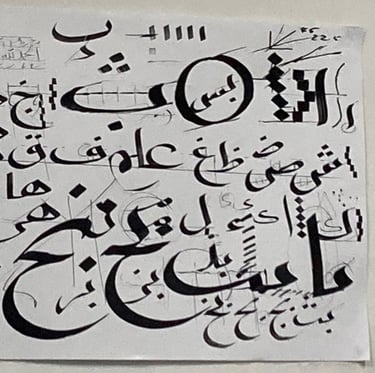

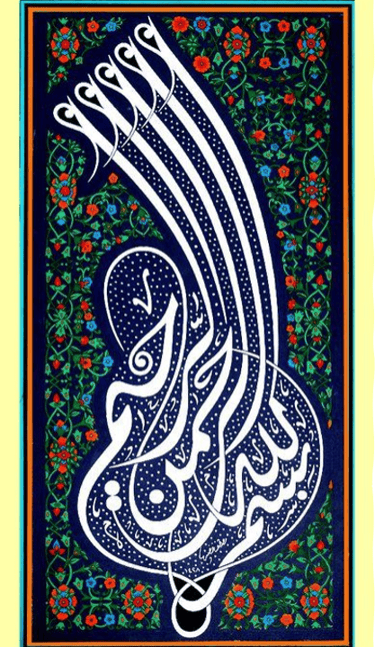
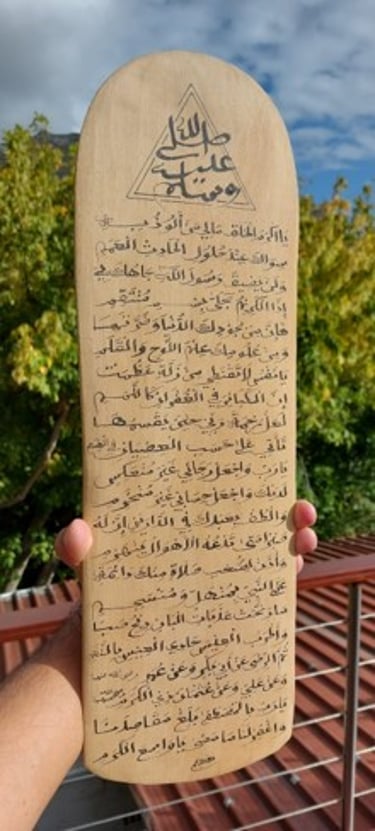
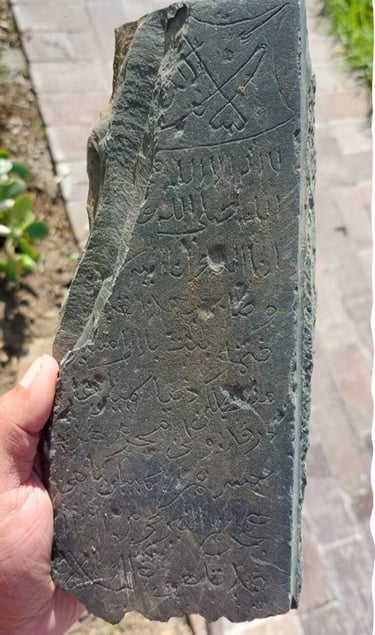
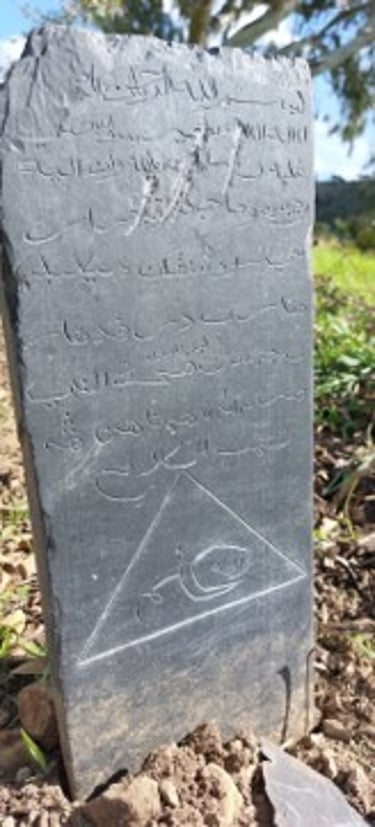
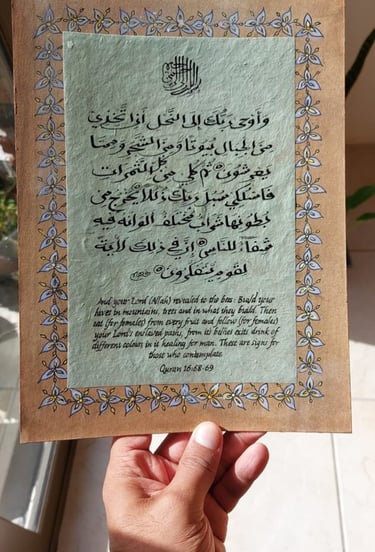







Preserving Cape Malay Heritage:
•Make effort to dig into your family history
•Value your heritage and culture
•Proudly speak about it to others especially your children
•Actively participate in reviving our heritage and culture.
•Lastly, write it down!
Discover
Contact Us
Our cultural heritage matters
Help us learn and grow by sharing your respectful feedback on our website, exhibitions, social media and more:
Store's Terms and Conditions
